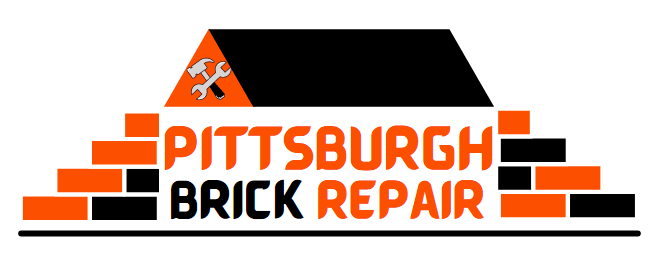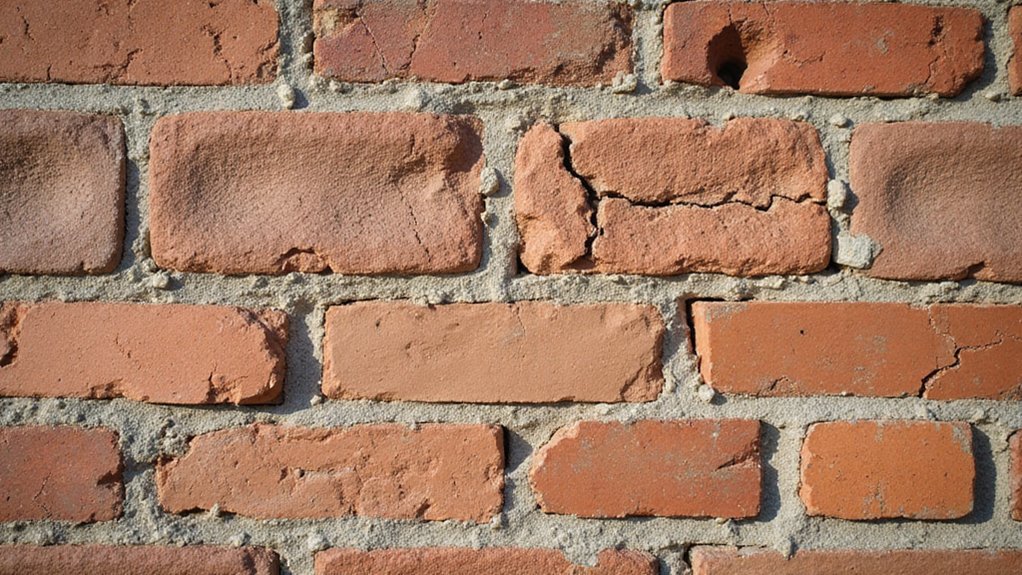Your brick walls aren’t just decorative – they’re a critical investment in your property’s structural integrity. Every brick structure faces potential challenges that can dramatically reduce its lifespan, from moisture infiltration to temperature fluctuations. Understanding how and when to protect your brickwork isn’t just smart maintenance; it’s about preventing costly future repairs. Want to know the secrets of preserving your brick’s strength and appearance? Keep exploring.
Understanding Brick Structural Integrity
Whenever you’re dealing with brick structures, understanding their structural soundness is imperative for preserving long-term longevity and security.
Moisture content and thermal expansion play indispensable roles in determining a brick wall’s health and resilience. You’ll want to monitor these factors carefully, as they can significantly impact your building’s structural integrity. Changes in temperature and humidity can cause bricks to expand, contract, and potentially develop stress fractures.
Fireplace repair experts recommend regular inspections to identify and address minor damage before it escalates into more significant structural issues.
Common Causes of Brickwork Deterioration
Building on our understanding of brick structural integrity, recognizing the primary factors that lead to brickwork deterioration can help you proactively protect your structure.
Moisture intrusion is a significant threat, silently weakening your walls and causing surface discoloration. Environmental stressors like freeze-thaw cycles, extreme temperatures, and chemical reactions can gradually compromise your brickwork’s strength. Salt deposits, pollution, and poor initial construction techniques also contribute to structural breakdown. Professional masonry repair can help prevent further damage and restore the structural integrity of your brickwork before minor issues become costly structural problems.
Identifying Early Warning Signs of Damage
Three key indicators can help you spot early brickwork damage before it becomes a serious structural issue.
First, watch for moisture intrusion signs like water stains or dampness near your walls.
Next, inspect your mortar joints carefully; crumbling mortar suggests your brickwork is deteriorating and needs attention.
Finally, check for small cracks or gaps between bricks, which could signal underlying structural problems.
Don’t ignore these warning signs. Catching damage early can save you significant repair costs and prevent more extensive structural damage to your home.
Environmental Factors Impacting Brick Longevity
After spotting early warning signs of brickwork damage, understanding how environmental factors influence your brick’s lifespan becomes paramount.
You’ll want to pay close attention to moisture retention and thermal expansion, which can substantially impact structural integrity. Harsh climate conditions like extreme temperature fluctuations, heavy rainfall, and high humidity can gradually weaken your brickwork’s resilience.
Freeze-thaw cycles, in particular, create micro-cracks that compromise the material’s strength over time. By recognizing these environmental challenges, you’ll be better equipped to protect and maintain your brick structures, ensuring they remain sturdy and reliable for years to come.
Professional Assessment and Diagnostic Techniques
How can you truly understand the health of your brickwork without expert knowledge? Professional masons use specialized visual inspection techniques to assess structural integrity. They’ll carefully examine mortar joints, identify potential cracks, and detect subtle signs of deterioration that untrained eyes might miss.
Laboratory testing procedures provide deeper comprehension into your brickwork’s condition. Experts can analyze brick composition, measure moisture penetration, and evaluate structural stress through sophisticated sampling methods. These diagnostic approaches help you catch potential issues early, preventing costly repairs and ensuring your home’s long-term durability and safety.
Essential Maintenance and Restoration Strategies
The preservation of brickwork demands proactive maintenance and strategic restoration techniques that can extend your structure’s lifespan considerably. You’ll want to prioritize moisture control and understand how thermal expansion impacts your bricks’ durability.
Regular inspections can help you catch minor issues before they become costly repairs. Look for signs of mortar deterioration, hairline cracks, or water penetration that might compromise your building’s integrity. By addressing these concerns early, you’ll protect your investment and maintain the structural strength of your brickwork, ensuring it remains resilient and attractive for years to come.
Cost-Effective Preservation Methods
Several cost-effective preservation methods can help homeowners protect their brickwork without breaking the bank. By investing in budget-friendly treatments, you’ll guarantee long-term protection and prevent costly repairs down the line.
Waterproof sealants, for instance, can shield your walls from moisture damage at a reasonable price. Regular cleaning with gentle solutions and soft brushes will remove dirt and prevent decay. Additionally, minor mortar repairs can be done affordably with DIY techniques, saving you significant money compared to extensive restoration projects.
When to Seek Expert Repair and Intervention
Recognizing potential brick damage early can save homeowners significant repair costs and prevent structural complications. If you notice extensive cracking, mortar deterioration, or water penetration, it’s time to consult a professional.
Early intervention planning helps you address issues before they become major problems, protecting your home’s structural integrity. Proactive problem mitigation involves scheduling regular inspections with qualified masonry experts who can assess your brickwork’s condition.
Don’t wait until small issues escalate into costly repairs. By taking swift action and seeking expert guidance, you’ll maintain your property’s value and guarantee long-lasting, sturdy brickwork.
Frequently Asked Questions
Can DIY Repairs Permanently Fix Significant Structural Brick Damage?
You’ll struggle to permanently fix significant structural brick damage alone. DIY repairs have limitations, and you’ll need a professional inspection to guarantee your home’s safety and wholeness.
How Much Does Complete Brickwork Replacement Typically Cost Homeowners?
You’ll face estimated project costs ranging from $5,000 to $25,000 for complete brickwork replacement. Unexpected repair expenses can vary based on your home’s size, damage extent, and local labor rates.
Are Historic Brick Buildings More Challenging to Maintain and Restore?
Historic brick buildings demand special care, as deteriorating mortar joints and extreme weather impacts challenge preservation. You’ll need expert restoration techniques to maintain their unique design/structural integrity and cultural significance.
What Insurance Coverage Options Exist for Extensive Brickwork Deterioration?
You’ll want extensive property insurance covering structural damage, ensuring claim procedures protect your home’s value. Specialized masonry policies can help offset restoration costs before deterioration impacts your property’s worth.
Do Different Brick Types Have Varying Lifespans and Maintenance Requirements?
You’ll find that brick durability factors vary widely, with clay and engineered bricks having different maintenance schedules. Your specific brick type, climate exposure, and care routine directly impact its longevity and performance.

